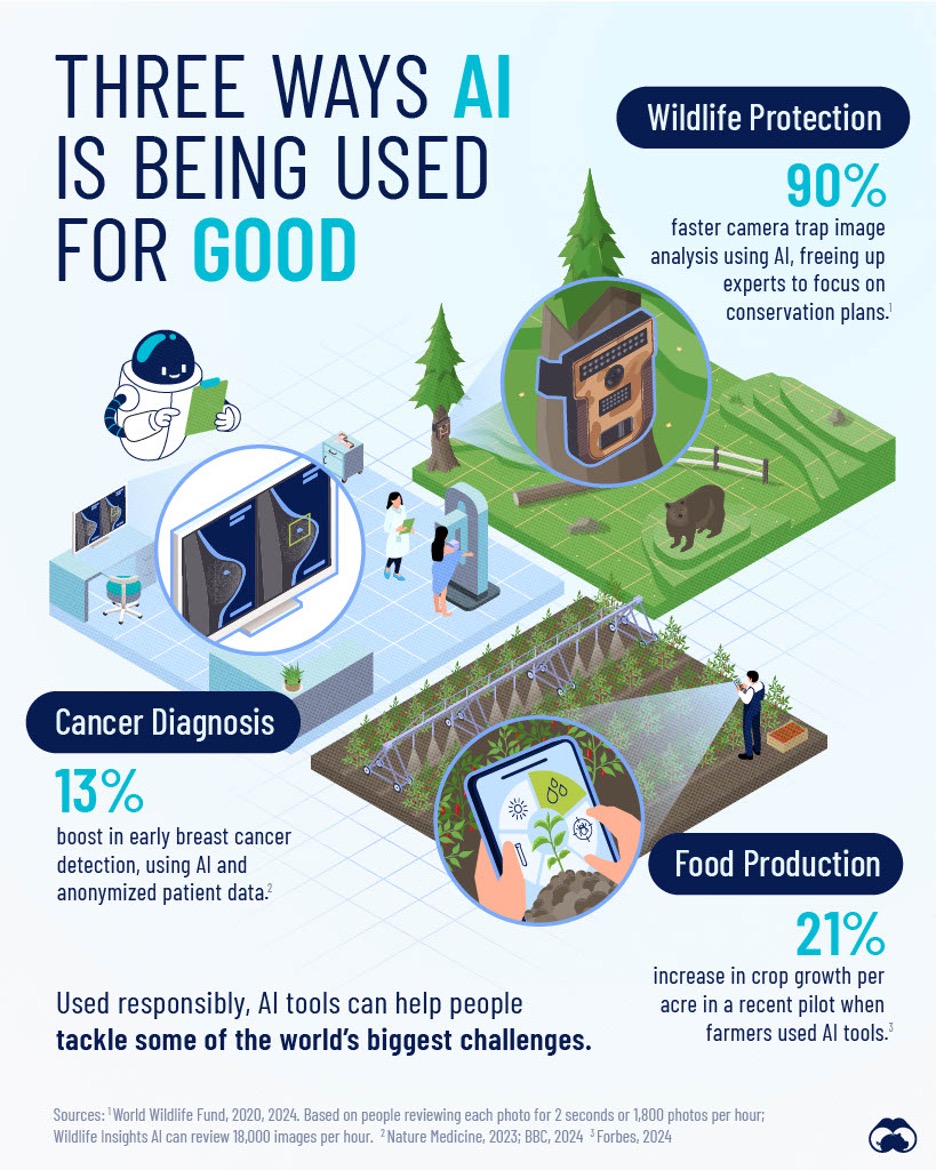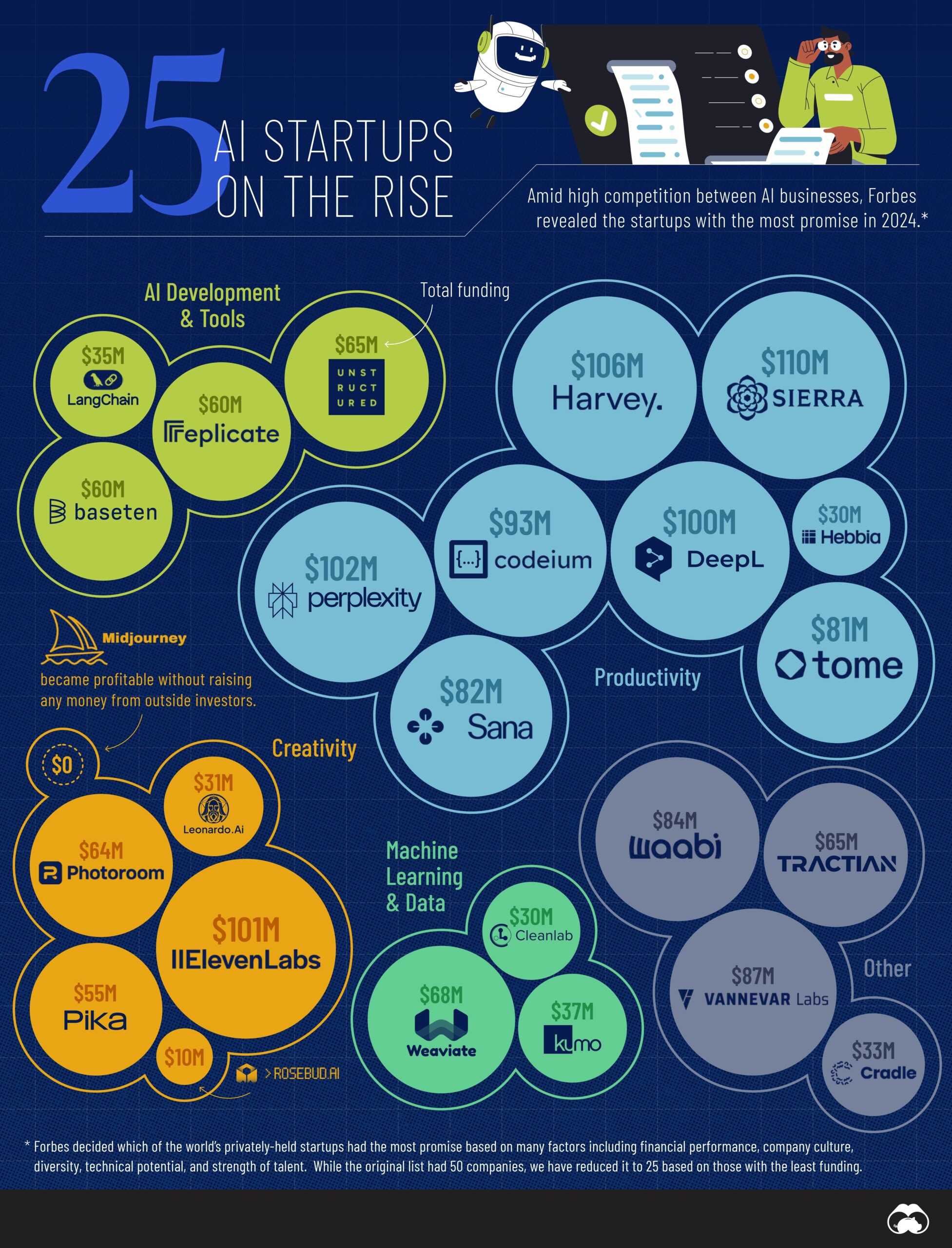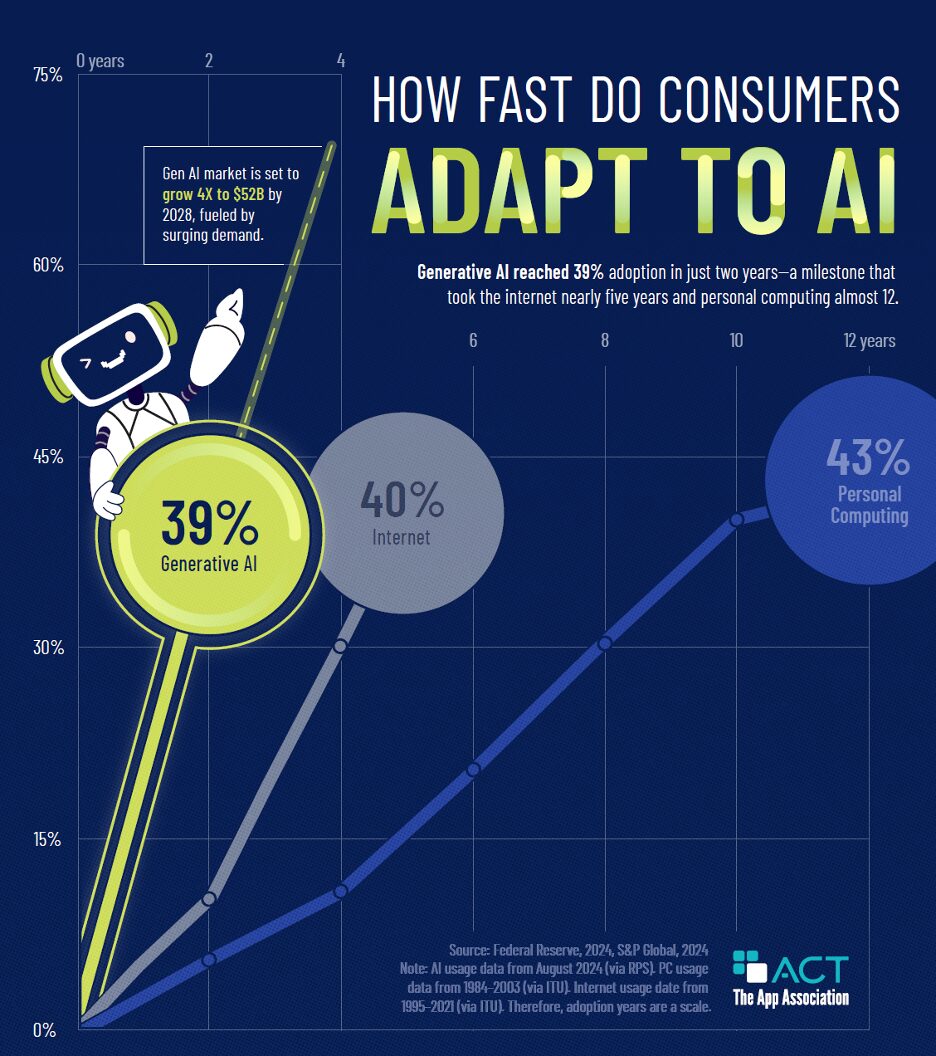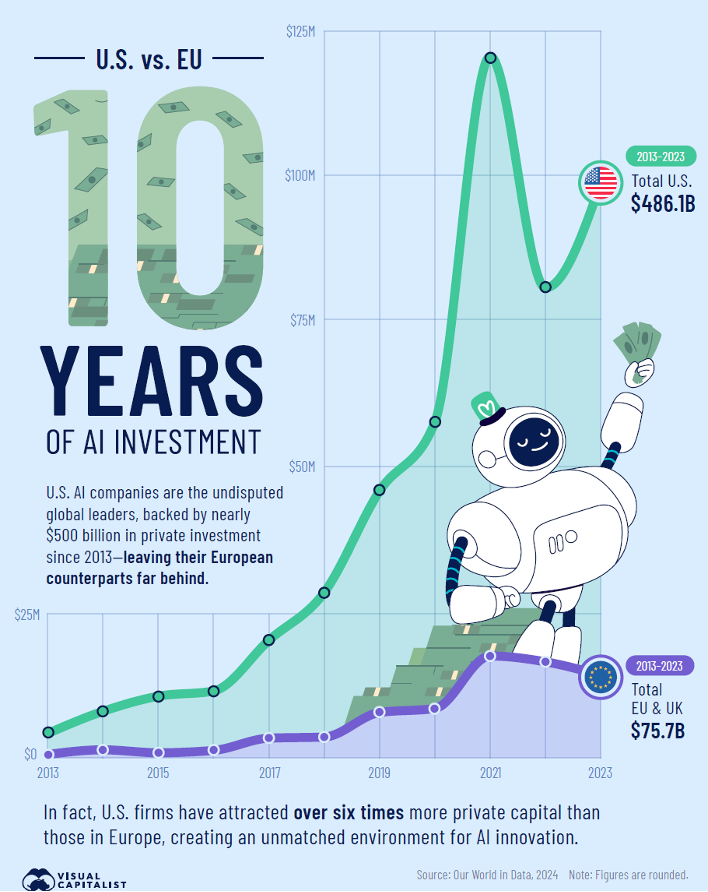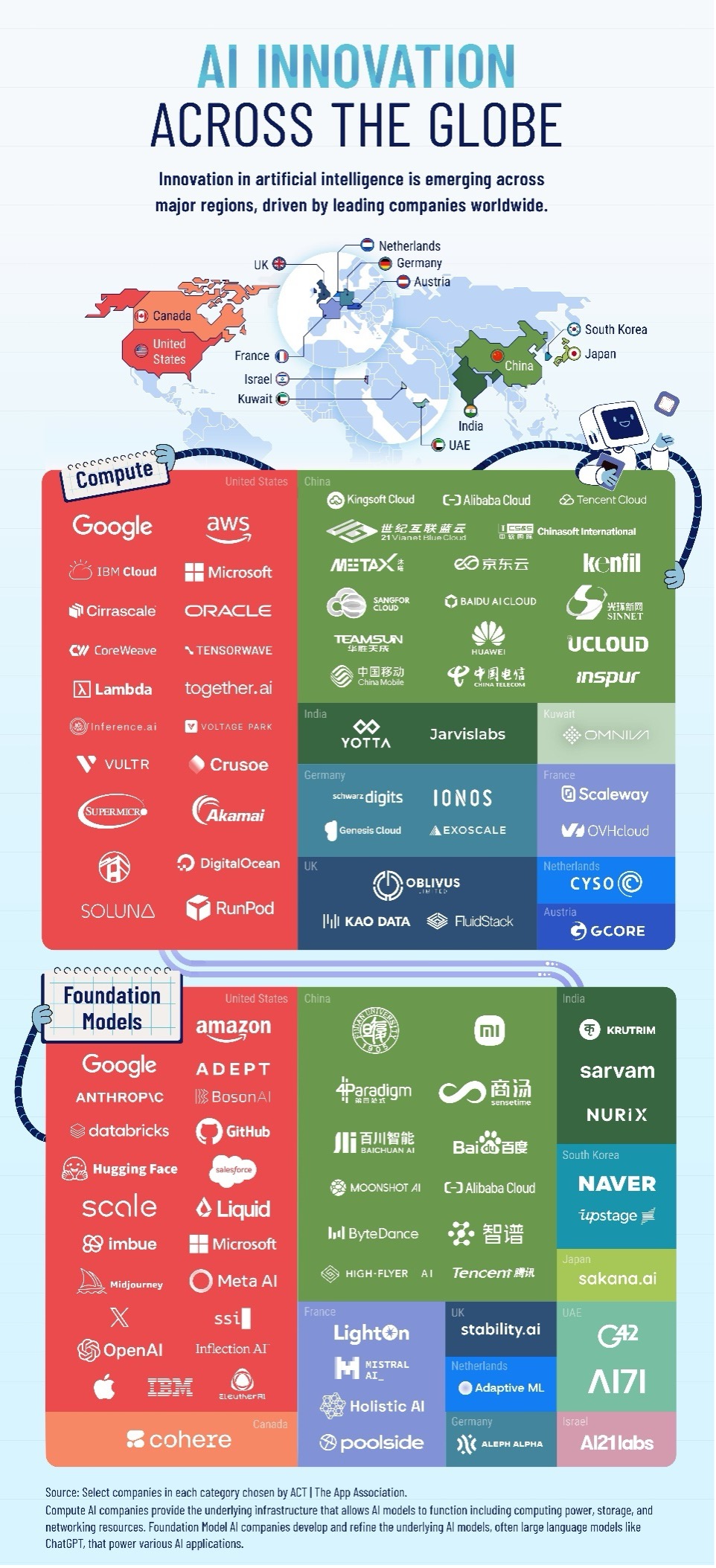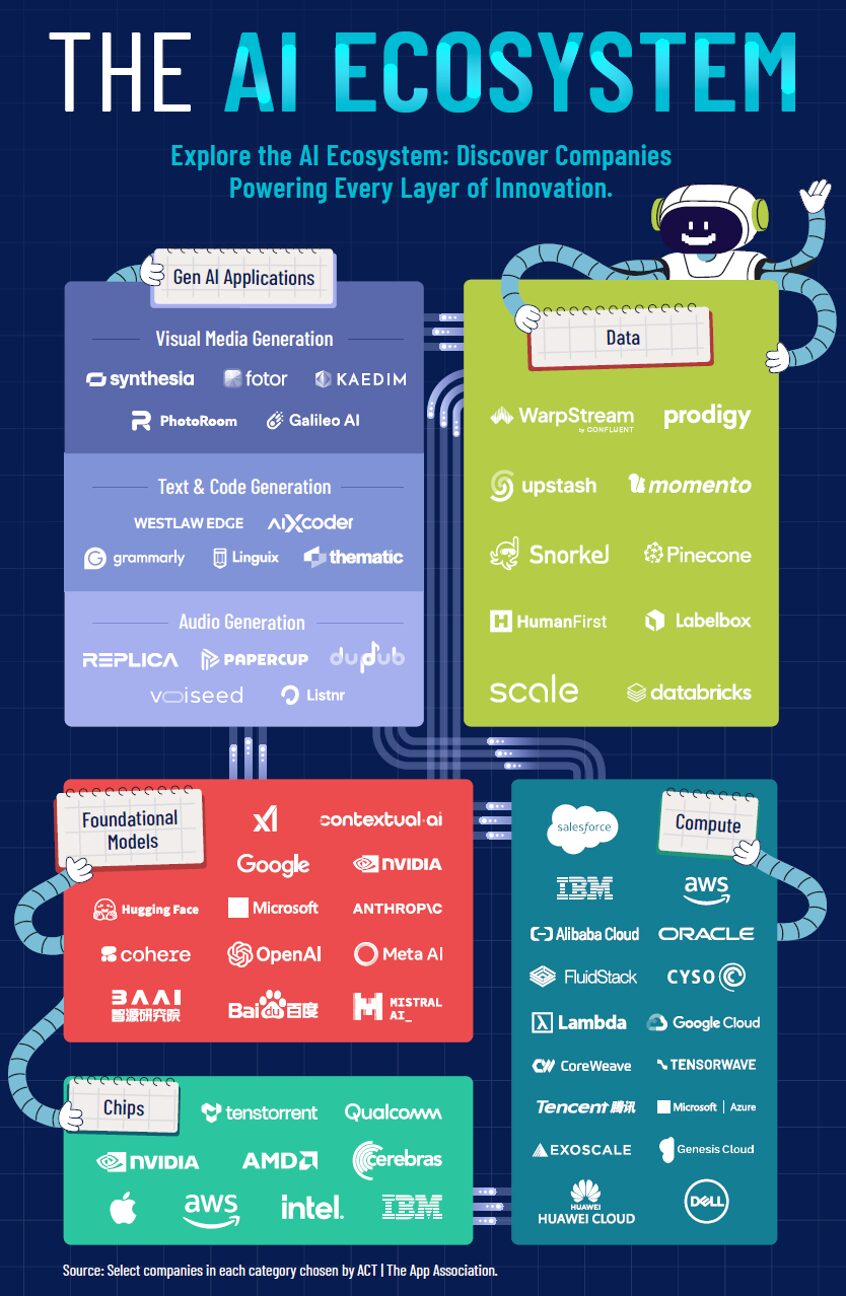Antitrust at a Crossroads:
Protecting Innovation in the AI Era
Early experiments with this approach are already backfiring, including the EU’s DMA. The DMA’s one-size-fits-all rules offer a clear warning: blunt regulation can chill innovation — especially for emerging technologies like AI. Some European officials are pushing to formally expand the DMA to cover AI and cloud services, despite no clear market failure and mounting concerns over regulatory overreach in the AI Act.
If U.S. policymakers follow the same script, capital and talent will migrate to more innovation-friendly jurisdictions, just as global demand for AI accelerates.
Policymakers should follow three principles to chart a smarter course in the United States:
- Focus on the application of existing laws to harms that may result from use, development, or deployment of AI systems, whether or not that issue threatens competition or not.
- Safeguard smaller rivals’ access to capital and investment, including via mergers and acquisitions.
- Avoid antitrust claims that seek to outlaw conduct based on speculative harms or that seek remedies to distract regulators or implement curated online marketplace (COM) management functions.
Anchoring policy and enforcement decisions, including those related to antitrust and competition, in these principles will help maximize consumers’ benefits from — and America’s lead in — global AI markets.

